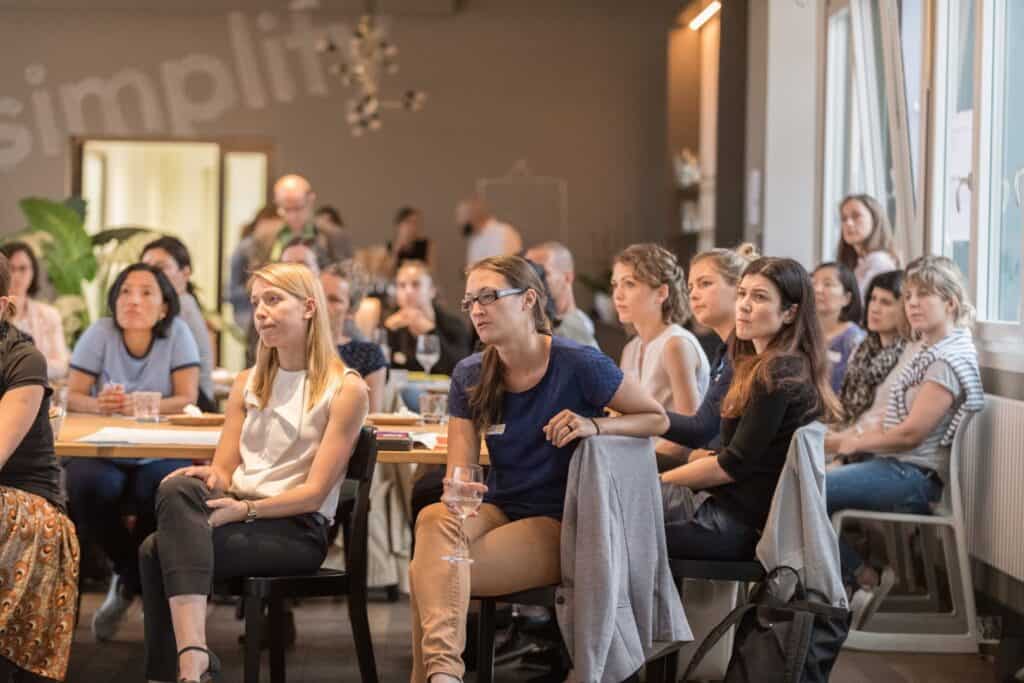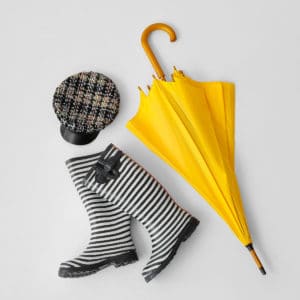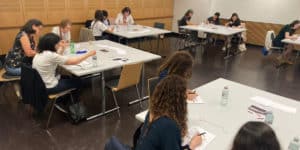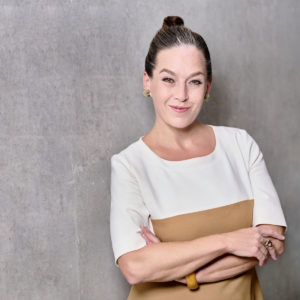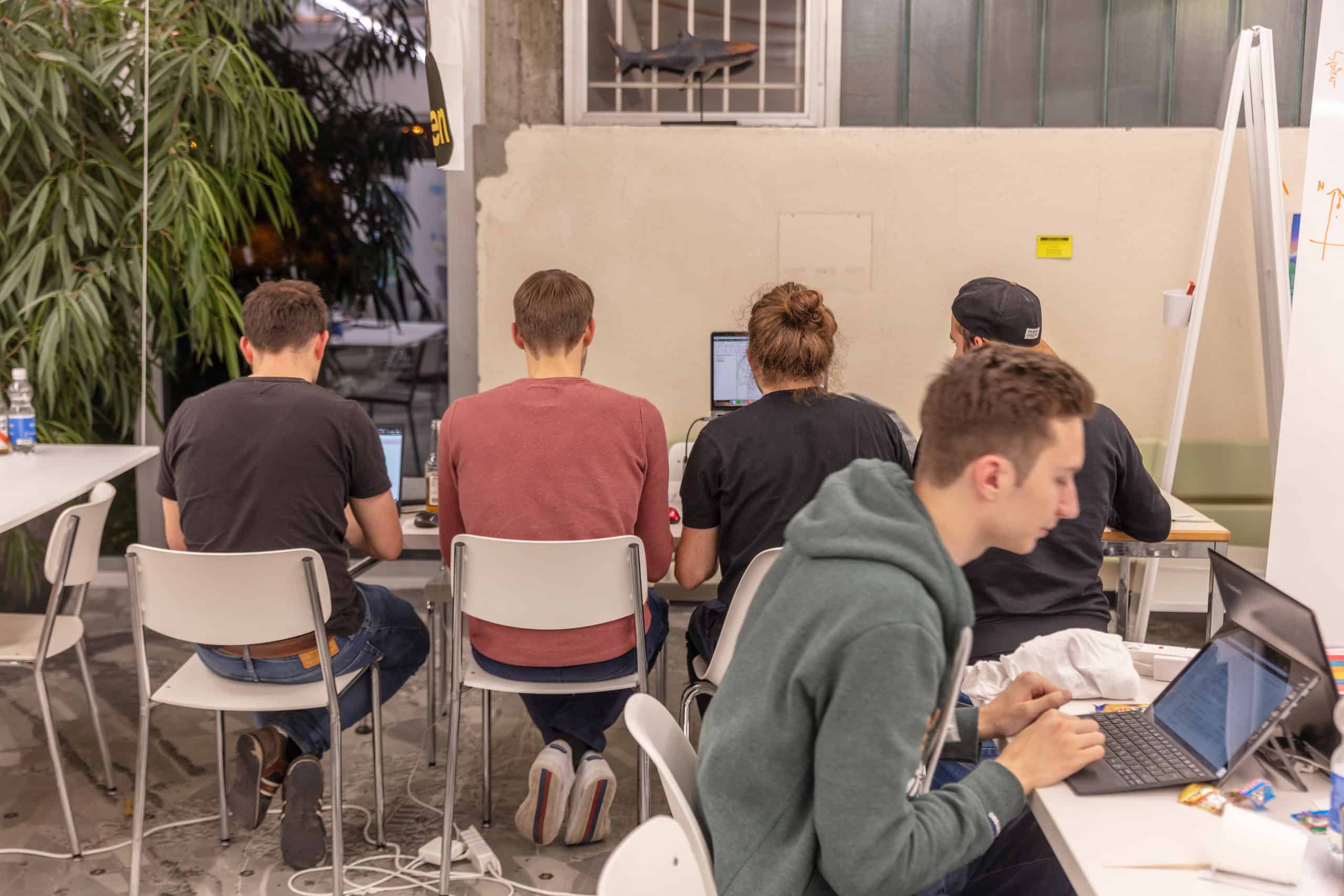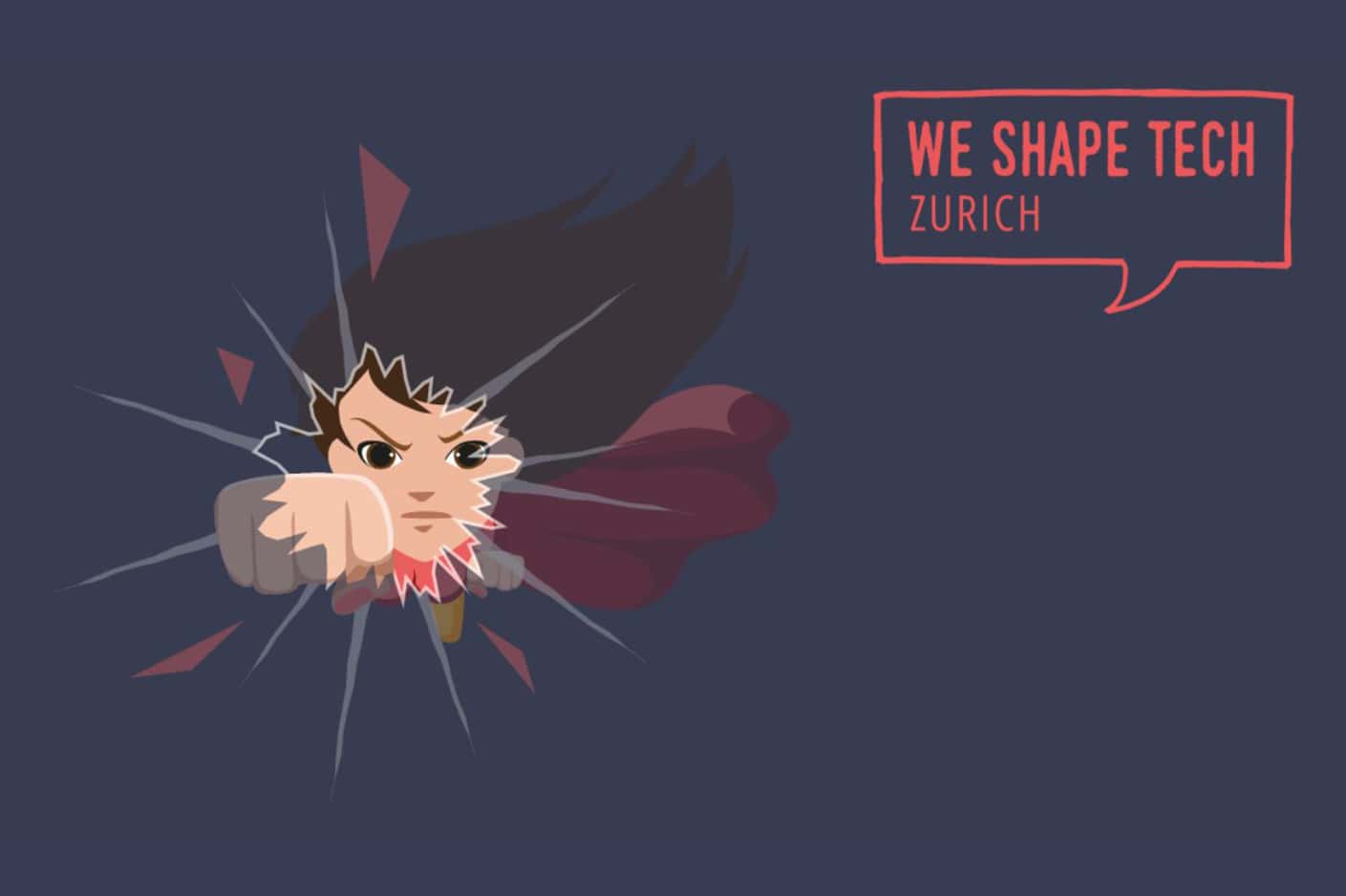Running 15 minutes late, I am sitting on my bike in heels, trying to beat the rain while wondering which would create the bigger blow to my confidence – arriving wet and late (due to the rain) or sweaty and slightly less late (due to a good workout). I end up deciding to choose the middle way, a little less speed, half sweaty, half wet from the rain and arrive 15 minutes later at Ginetta’s to Crack the Confidence Gap with We Shape Tech.
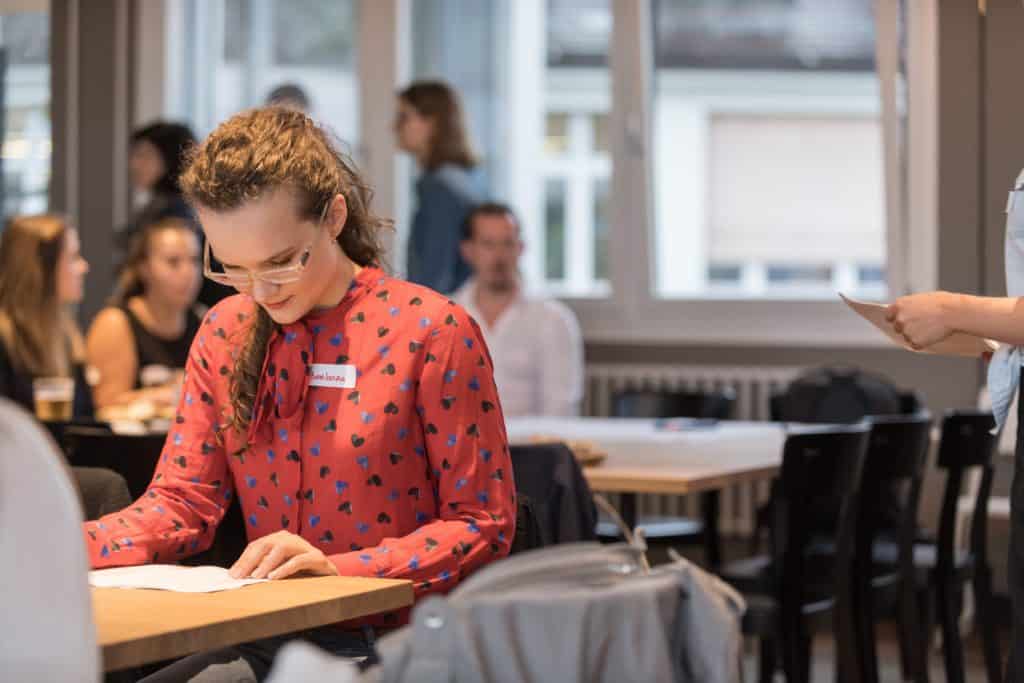
The event is filled to the brim, 79 eager participants show up to find out more about confidence. The crowd arrives prepared – participants have gone through a short survey that helps them identify which areas of confidence needs the most improvement. Not to my surprise and to my own annoyance I score worst in the category of self-branding and marketing. I decide to politely ignore the result and later join another working group to save my brain from getting stuck in another rant on why I refuse to consider myself a product I need to market and build building confidence in another area of my life.
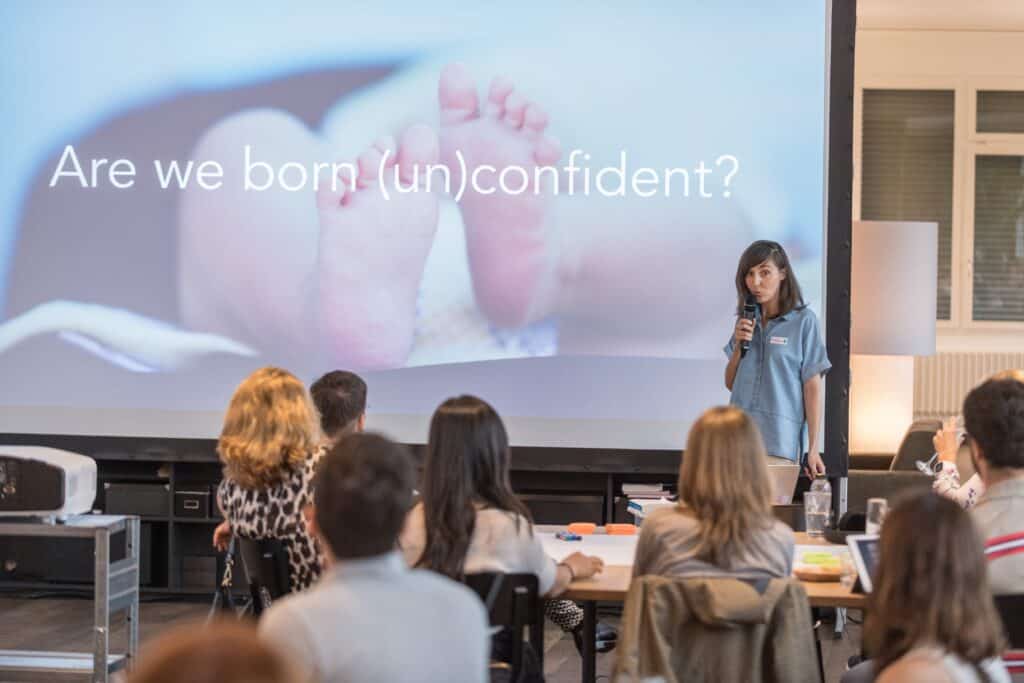
The evening starts with a short deep into what confidence is. Simone Reichlin User Researcher at Ginetta takes the stage to demystify confidence and shares the fundamentals from a psychological perspective. Confidence is defined as the trust in ones abilities, qualities and judgment and serves as our basis to act and deal effectively with life’s challenges.
Research shows that confidence is learned rather than a trait we are born with. Both socialization and attachment style influence the confidence we build early on and later on support or hinder the further development of confidence throughout our lives.
Other factors influencing self-confidence are gender, age and nationality with women consistently scoring lower when self-confidence between genders are compared. “While we think we live in an equal world, the gender gap clearly shows that reality still is different.” To tackle the challenge Simone suggests to pair building awareness on where and why the gap occurs with talking about it and building the tools to bridge the confidence gap. The evening’s program is designed to help us put those three steps into practice.
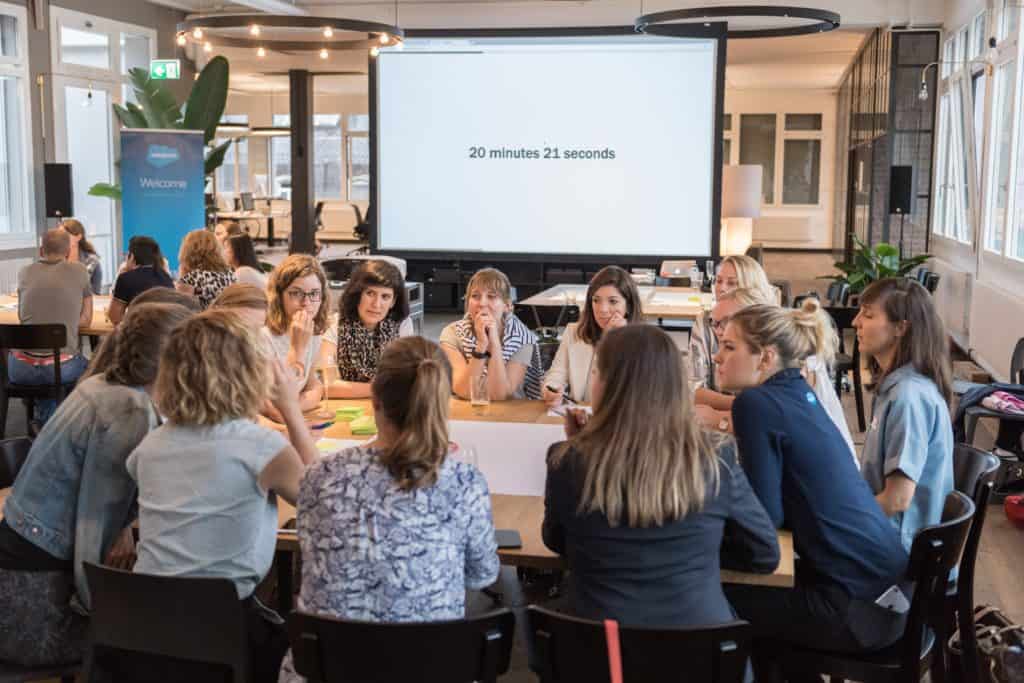
I decide to join a working group that takes a closer look on how to build confidence in response to typical situations that occur in the workplace every day.
The discussion in my group is lively and brings up experiences that we read and hear about frequently. There is the tech consultant who has to prove her role again and again as a project lead, even so she has 10 years of experience in the field. The sales representative who casually gets asked by her manager whether she knows if she wants to have a family or build her career. And the co-worker who doesn’t know what to do with her tears in the workplace that sometimes build up when she is extremely frustrated or angry.
Many of us noticing that the blow towards our confidence feels worse when we feel we reacted in an inappropriate way during or after the situation.
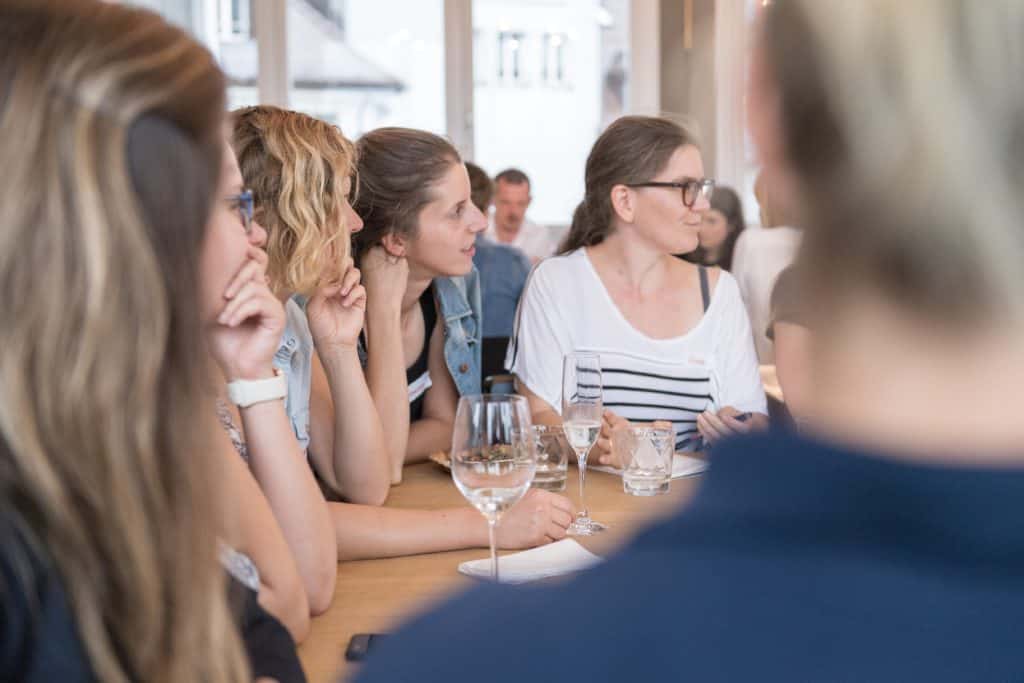
While coming up with solutions we also start asking ourselves who has been setting the norms and rules for what we accept as professional behavior. Why do we feel pressured to come up with a response right away? Why does it seem like a no go to tear up or cry at work? And will these norms change with more and more women taking the lead in the workspace?
Some of the solutions we build in the group are simple, but have proven effective like taking the time to follow up when we want to communicate more even after a conversation has ended, asking for feedback more often, taking the time to download with an ally before confronting the person concerned in a conflict or misunderstanding.
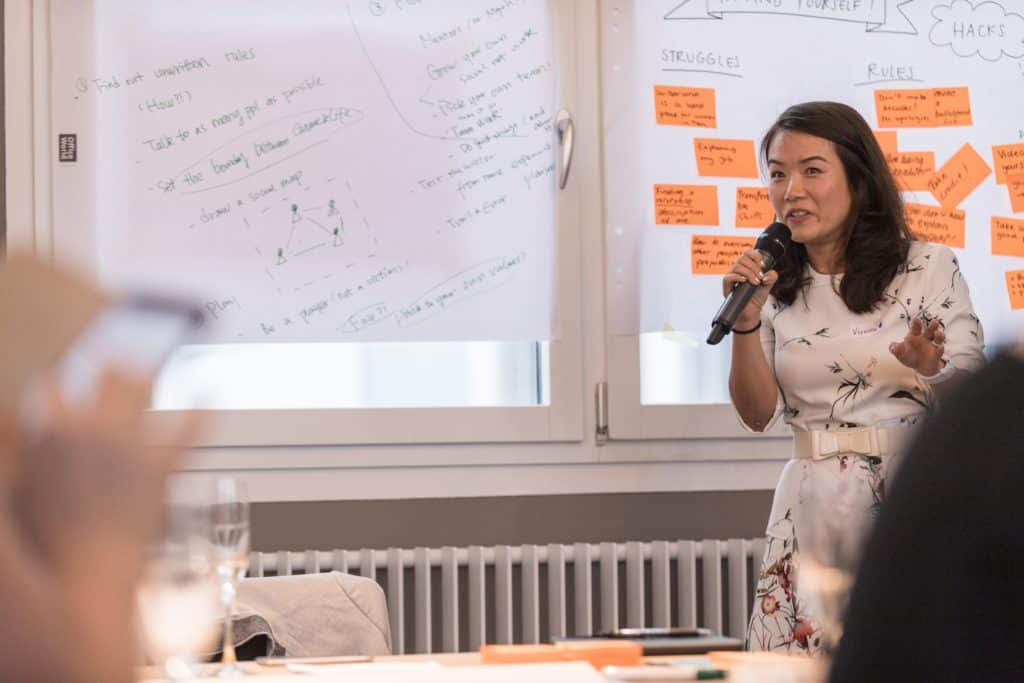
Appreciating the diversity of possibilities presented on building and demonstrating more confident behaviour, to me the larger question on how environments and structures need to be shaped to enable women to live, express and practice confidence remains unaddressed. Lately, I am feeling a growing level of unease when women address how they can adjust their behavior to come across more confident. I am wondering if we once more just try to accommodate ways of operating that already don’t support the majority of women, rather than addressing the root cause.
On my way home, my head is spinning with questions and new ideas. Climbing up the small hill towards my apartment on my bike, I conclude that for me confidence continues to grow in spaces that allow me to actively engage, in which people are interested in my thoughts and opinions, in which I can contribute to shaping the flow of communication and there is a willingness to continuously work through differences.
